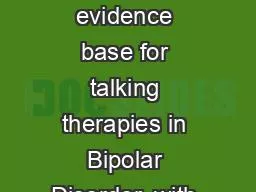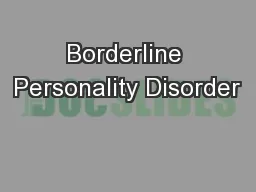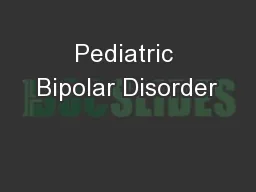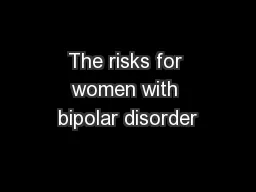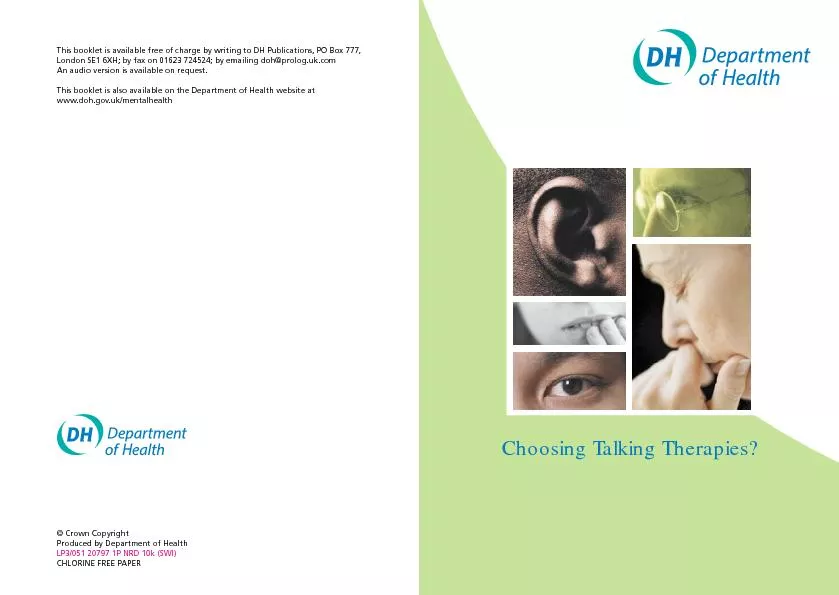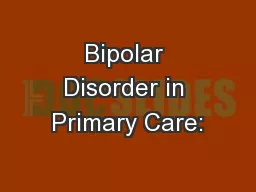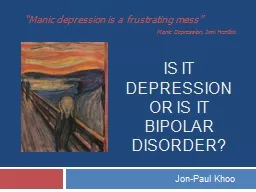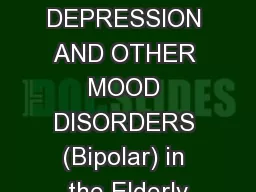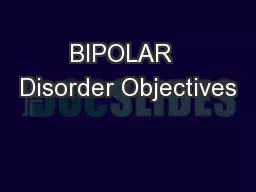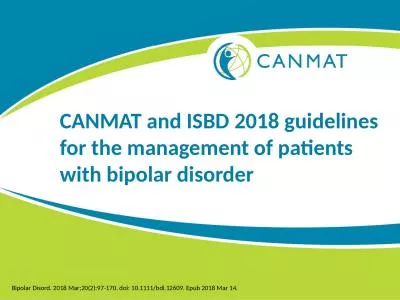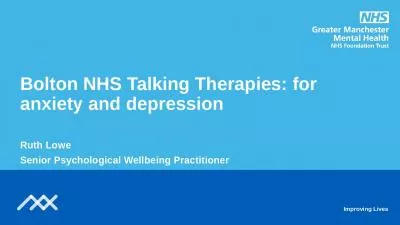PPT-A critical review of the evidence base for talking therapies in Bipolar Disorder, with
Author : acenum | Published Date : 2020-06-29
Sameer Jauhar Consultant Psychiatrist and Research Fellow IoPPN Kings College London What I will cover Existing therapies for bipolar disorder Evidence based
Presentation Embed Code
Download Presentation
Download Presentation The PPT/PDF document "A critical review of the evidence base f..." is the property of its rightful owner. Permission is granted to download and print the materials on this website for personal, non-commercial use only, and to display it on your personal computer provided you do not modify the materials and that you retain all copyright notices contained in the materials. By downloading content from our website, you accept the terms of this agreement.
A critical review of the evidence base for talking therapies in Bipolar Disorder, with: Transcript
Download Rules Of Document
"A critical review of the evidence base for talking therapies in Bipolar Disorder, with"The content belongs to its owner. You may download and print it for personal use, without modification, and keep all copyright notices. By downloading, you agree to these terms.
Related Documents

